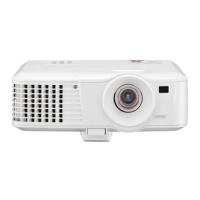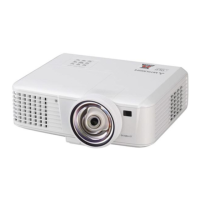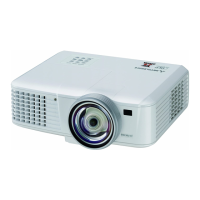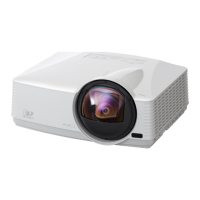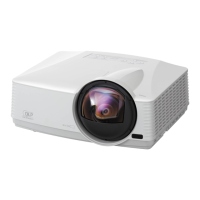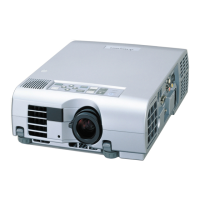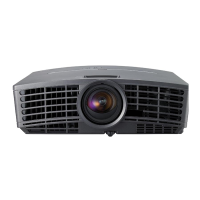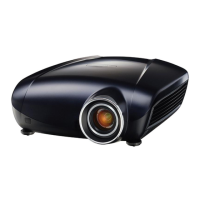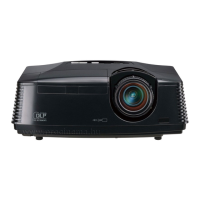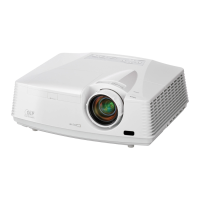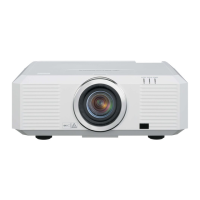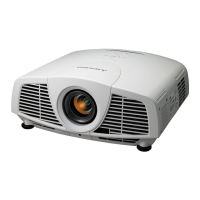EN-31
ENGLISH
3D Color Management
In most installation situations, color management will not be necessary, such as in classroom, meeting room, or
lounge room situations where lights remain on, or where building external windows allow daylight into the room.
Only in permanent installations with controlled lighting levels such as boardrooms, lecture theaters, or home theaters,
should color management be considered. Color management provides fine color control adjustment to allow for more
accurate color reproduction, should you require it.
Proper color management can only be achieved under controlled and reproducible viewing conditions. You will need
to use a colorimeter (color light meter), and provide a set of suitable source images to measure color reproduction.
These tools are not provided with the projector, however, your projector supplier should be able to provide you with
suitable guidance, or even an experienced professional installer.
The Color Management provides six sets (RGBCMY) of colors to be adjusted. When you select each color, you can
independently adjust its range and saturation according to your preference.
If you have purchased a test disc which contains various color test patterns and can be used to test the color
presentation on monitors, TVs, projectors, etc. You can project any image from the disc on the screen and enter the 3D
Color Management menu to make adjustments.
To adjust the settings:
1. Go to the PICTURE menu and highlight 3D Color Management.
2. Press MODE/ENTER and the 3D Color Management page is displayed.
3. Highlight Primary Color and press / to select a color from among Red, Green, Blue, Cyan, Magenta, or
Yellow.
4. Press to highlight Hue and press / to select its range. Increase in the range will include colors consisted
of more proportions of its two adjacent colors.
Please refer to the illustration to the right for how the colors relate to each
other.
For example, if you select Red and set its range at 0, only pure red in the
projected picture will be selected. Increasing its range will include red close
to yellow and red close to magenta.
5. Press to highlight Saturation and adjust its values to your preference
by pressing / . Every adjustment made will reflect to the image
immediately.
For example, if you select Red and set its value at 0, only the saturation of
pure red will be affected.
6. Press to highlight Gain and adjust its values to your preference by
pressing / . The contrast level of the primary color you select will be
affected. Every adjustment made will reflect to the image immediately.
7. Repeat steps 3 to 6 for other color adjustments.
8. Make sure you have made all of the desired adjustments.
9. Press MENU/EXIT to exit and save the settings.
Saturation is the amount of that color in a video picture. Lower settings produce less saturated colors; a setting of “0” removes
that color from the image entirely. If the saturation is too high, that color will be overpowering and unrealistic.
Using Wall Screen
In the situation where you are projecting onto a colored surface such as a painted wall which may not be white, the
Wall Screen feature can help correct the projected picture’s color to prevent possible color difference between the
source and projected pictures.
To use this function, go to the DISPLAY > Wall Screen menu and press / to select a color which is the closest
to the color of the projection surface. There are several recalibrated colors to choose from: Light Yellow, Pink, Light
Green, Blue, and Blackboard.
RED
BLUE
GREEN
Yellow
CyanMagenta
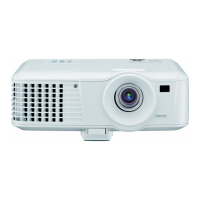
